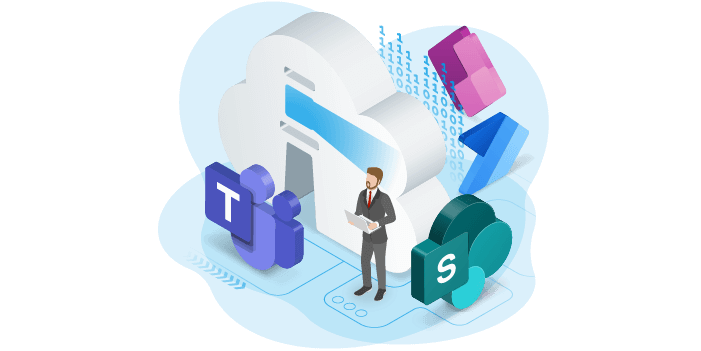Governance, compliance, and risk management affect organizations’ business-wide. Making sure the handling of data and information lies between the rules and regulations internally and externally is a constant flux between legal, finance, IT, and the executive board as rules, regulations, and technology evolve. All IT risk management, governance, and compliance steps boil down to one thing – staying in control of your business environment – your Microsoft 365 platform.
Understand your unique environment
Before you dive straight into a strategy, you need to understand where the responsibility lies between your organization and Microsoft. The objective is to classify, detect, and manage users handling data so you can protect IT. Microsoft 365 is a cloud platform. Therefore, it’s Microsoft’s job to protect the service, while the organization must protect the data, identities, and devices of the users in the organization.
Assessing your position means you can then identify and group stakeholders to align your governance plan. These groups are business information workers, legal, risk, compliance, governance teams, and IT teams. You need to make sure each of these groups buys into your governance approach and understand where responsibility lies. The line of communication needs to be clear. Your risk management strategy should be:
- Systematic
- Recorded
- Reviewed consistently
Have a dynamic governance approach
Collaborative platforms like Microsoft 365 are central to your business processes, but with such enormous potential for productivity come issues around governance and compliance. That’s why a good governance plan can prevent problems before they arise.
However, many plans are static and, therefore, ineffective. With flexible working, the increase in devices employees are working with, along with the large influx of data and information they are collecting, means the traditional manner of governance must be updated and adapted. A governance approach must mirror the current needs of business users operating in the Microsoft 365 ecosystem. It must be as dynamic as the IT environment that it seeks to protect.

A dynamic governance approach includes continuous monitoring. By continuously monitoring your platform, you can identify changes daily and adjust your governance plan accordingly. Processes need to remain optimally productive, and you need to be aware and in control if violations occur. Monitoring is the most effective method when it comes to making sure your environment and the people using it stay compliant. It’s worth seeing what tools can help you in doing so.
Why is vigilance an important part of IT compliance?
No matter how secure your IT environment is, there are certain risks that you implicitly face:
- External threats
- Internal threats
Research the industry standard
Within the last few years, how personal information is processed and stored has come under scrutiny, leading to General Data Protection Regulations (GDPR) being updated in Europe, as an example. Within this time, Gartner has also launched its Integrated risk management (IRM) magic quadrant as a benchmark to assess vendors on how their technology handles data in ways that safely simplify and automate operational IT risk management. When looking for a Risk Management solution, it’s worth checking what both Gartner and particularly sites, like Capterra, say about an organization and its software.
Utilize the Microsoft 365 Compliance Center
The Microsoft 365 Compliance Center is a great resource to strengthen your Microsoft governance security and compliance posture. Depending on your Microsoft 365 licensing, you will have access to many features, from information governance to insider risk management. With these features, you can classify business-critical data, manage content lifecycle, and detect risky activity across your platform, allowing you to take action on insider risks and threats.
Check out Rencore Governance
Rencore Governance is the latest in Microsoft 365 governance automation. Rencore Governance allows you to run a more open Microsoft 365 environment and wider Microsoft 365 services without locking down users. It also enables IT to stay in control of their Microsoft 365 environments with a dynamic governance approach.



